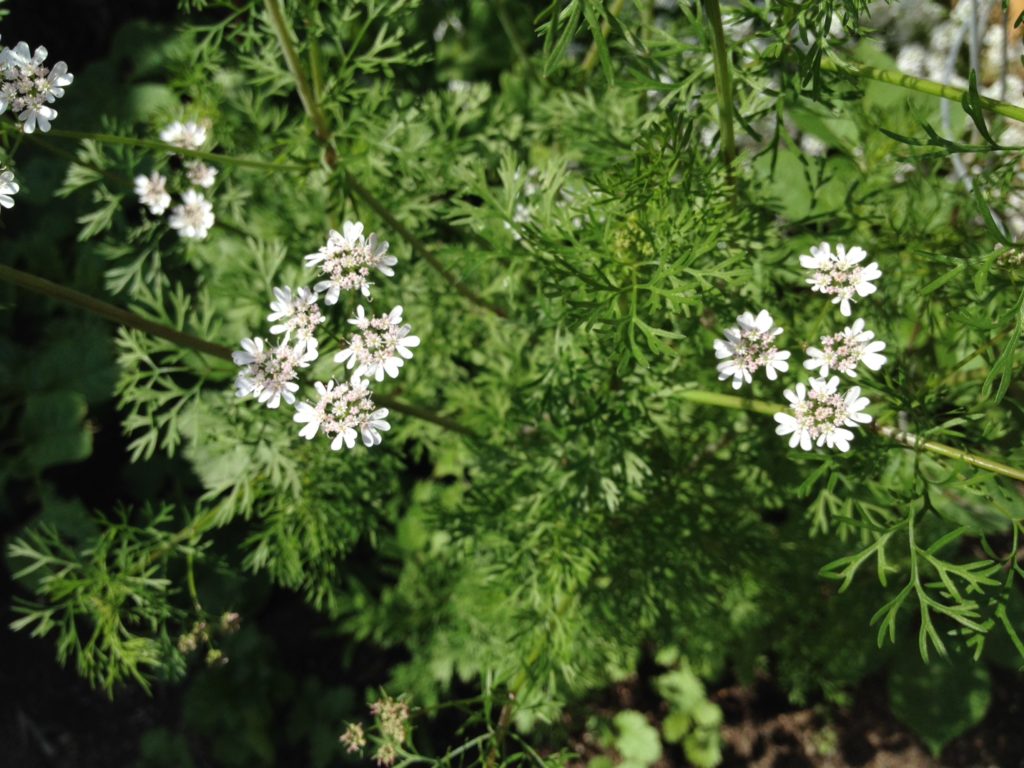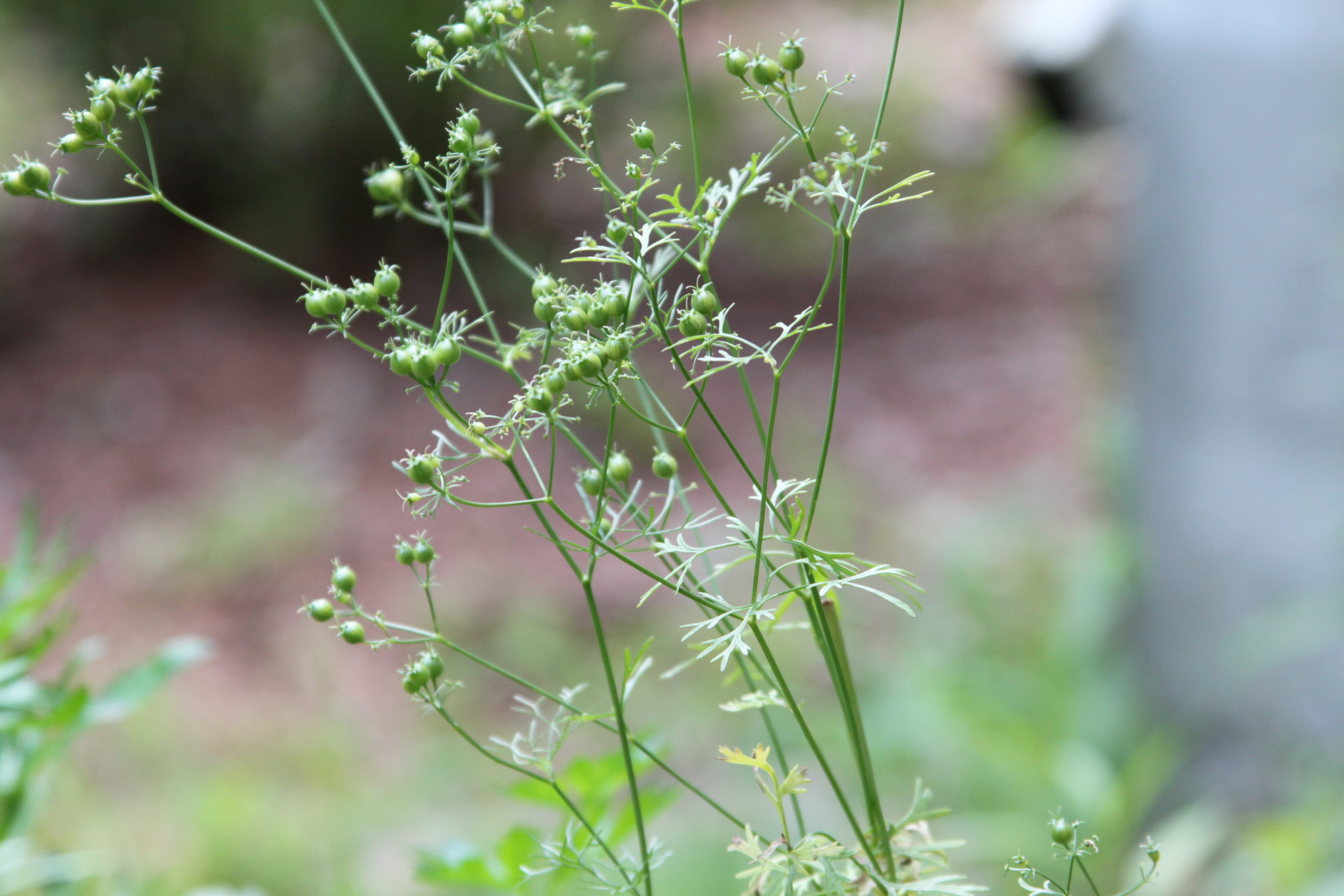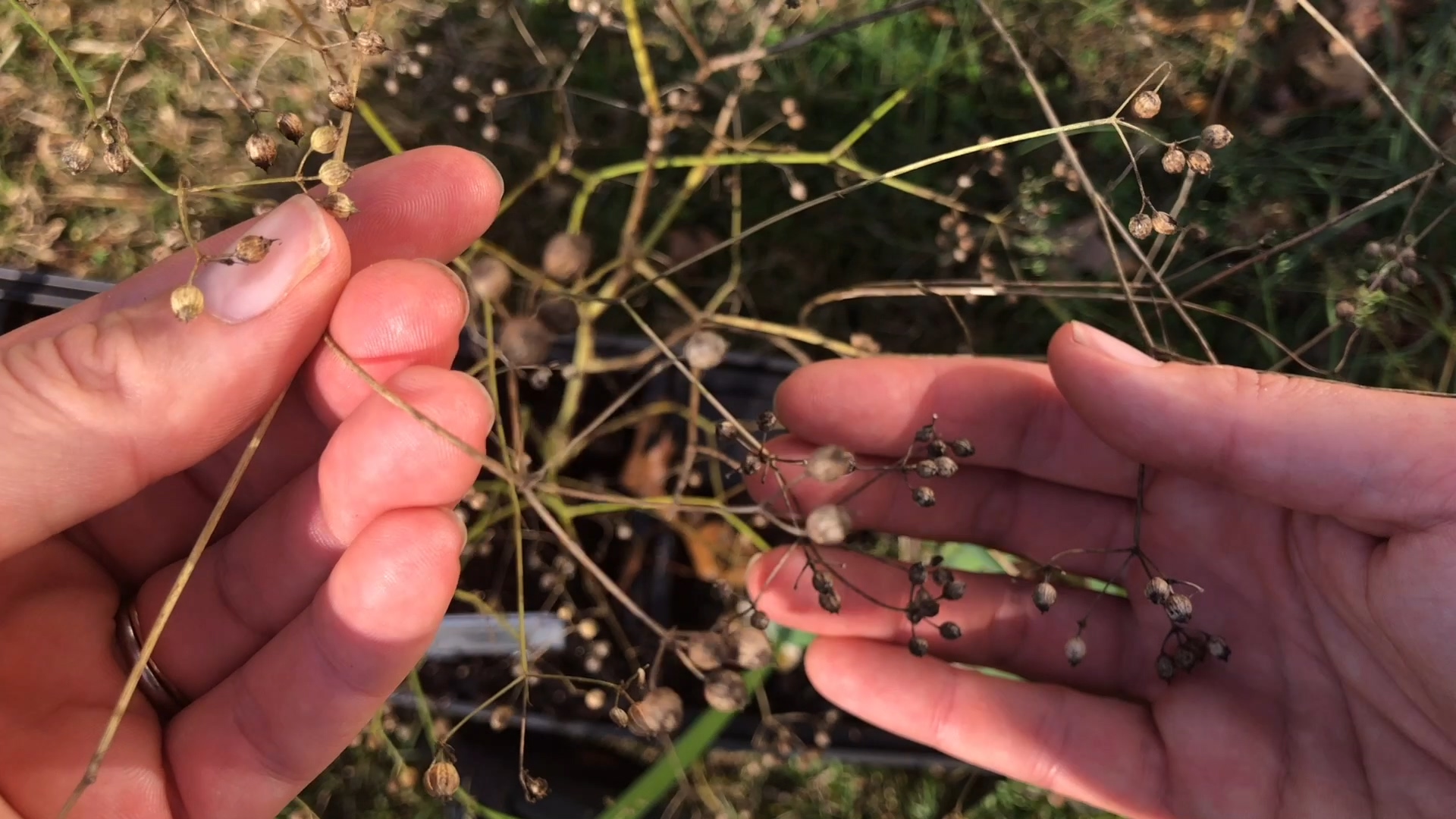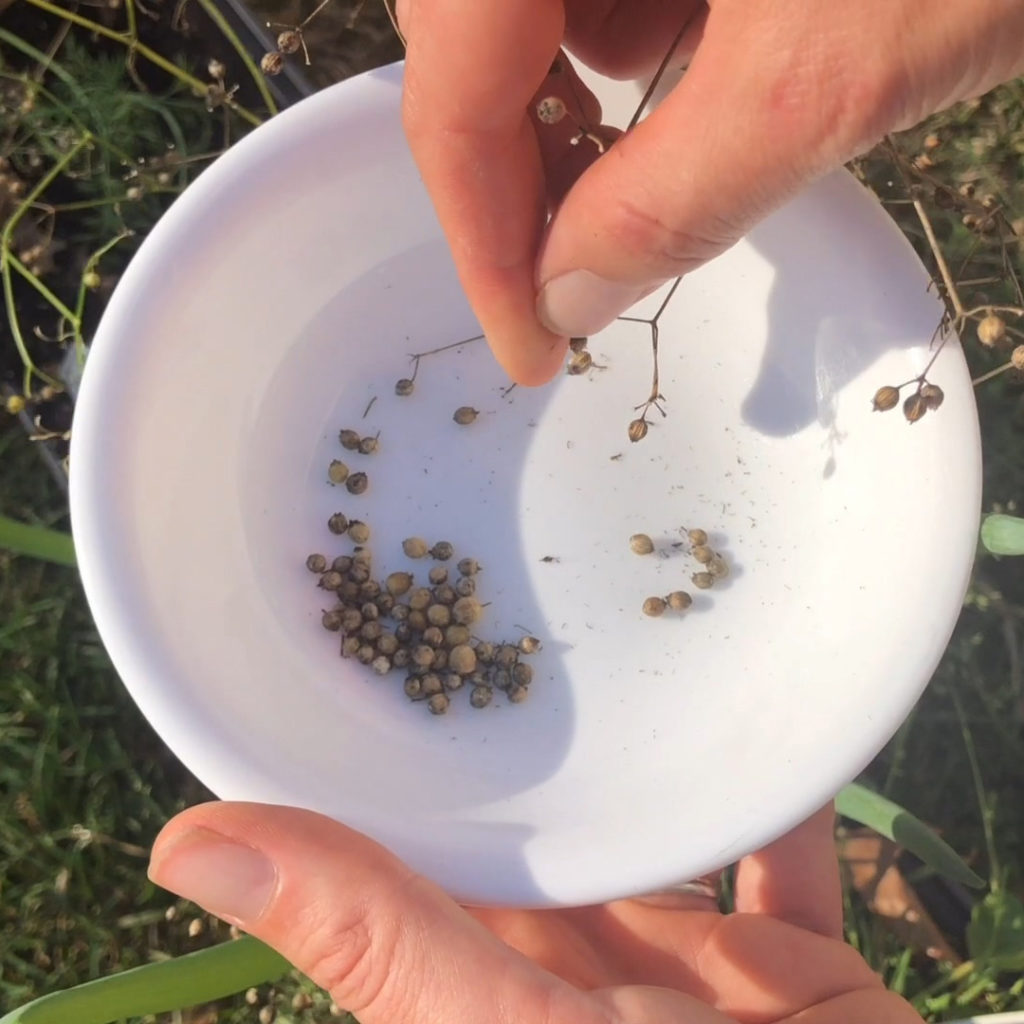If you use coriander or cilantro seed for cooking you know spices can be expensive, especially organic. Good news is coriander is the easiest spice to grow! Today I’m going to talk about how I quickly harvest coriander from my garden, how to know when it’s ready, plus some tips on drying, storing, and using.
What Is Coriander?
First off, if you’re not familiar with coriander, you might be surprised to know that coriander is the seed from the cilantro plant, king of salsa recipes everywhere.
If you’re disappointed when your cilantro gives up the ghost and bolts, don’t be! Not only did you just get a bonus harvest of spices, but you can plant the seeds for a succession crop of cilantro.
Coriander is also called Chinese parsley, cilantro seed, or dhania. It has been used by humans since at least 1550 BC and is often used in Indian cuisine, in German sausage recipes, some African dishes, in pickling spices, and it’s even listed as one of the original secret ingredients to Coca-Cola.
What’s your favorite coriander recipe? Let us know in the comments!
When Do You Harvest Coriander?
Cilantro starts off as a small plant, gets huge, up to 2 feet, blooms with beautiful pollinator-attracting white flowers, and then sets seed. This usually happens around the 120 day mark, or four months after you’d planted the initial seed.

The immature seeds are initially lime green, bitter-tasting to many, and not mature enough to plant. You’ll know they’re ready to harvest when they turn from green, to pink, and eventually to brown.
If you don’t harvest the seeds, they will eventually fall to the ground and grow into more cilantro. This is what they mean by a “self-seeding” crop. I almost always miss some coriander seeds every year, so I have a couple patches of self-seeded cilantro throughout my yard. It’s not invasive, though, so don’t worry!


How to Harvest Coriander
If it’s almost winter, feel free to leave the dead plant in the garden. By not cleaning up the garden in the fall, you’re offering a habitat for over-wintering pollinators like bees and butterflies, and pest-eating ladybugs and birds.
The best way to harvest the coriander in this situation is to gently rub the seeds between your fingers until they come off the plant. Make sure to have a large container underneath to catch the seeds.
If you need to remove the plant, say if you’re planting a new crop of cilantro, you can pull the entire plant up by the root. Use the same rubbing method. You’ll be able to go a little faster since you can put the whole plant over the bowl.


Now my root didn’t look too tasty to me—I think it may have been because it was an older plant—but if you get the chance, try the cilantro root, which I’ve heard has a slightly peppery-cilantro flavor and is used in Thai dishes.
Drying & Storing Cilantro Seeds
Now that we have our seeds, I like to leave them out to air dry for a few days just to make double sure they’re completely dry. At this point you can store them in your favorite spice container, use a spice grinder to grind them into ground coriander, or fill up a seed envelope for your next crop of cilantro.
If this tutorial helped you out let me know if the comments. And tell me how your coriander harvesting went! Subscribe to my email newsletter or my YouTube channel for more garden tips and tutorials.
Keep gardening like a boss and I’ll see you guys soon!


I have harvested the seeds, and am finishing drying in dehydrator @ 120 degrees.. 7 hours. Please guide me – is this correct way to do this? I am planning on storing in spice jar & I do not want any moisture!
That sounds perfect Sandra! Enjoy those homegrown spices! 🙂